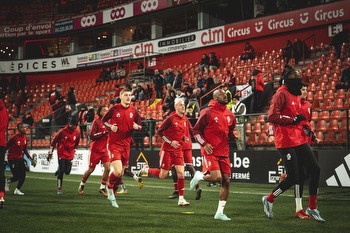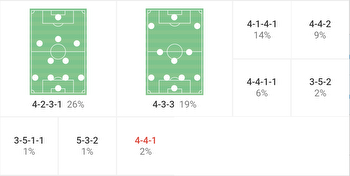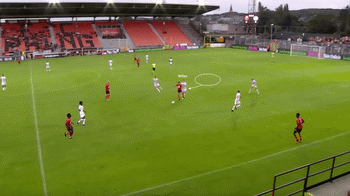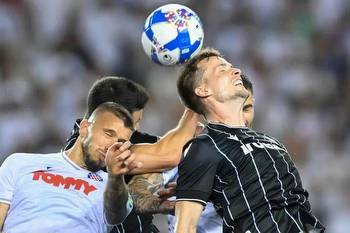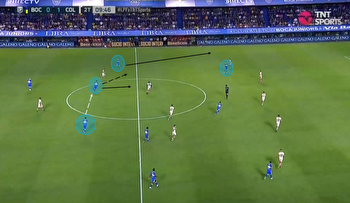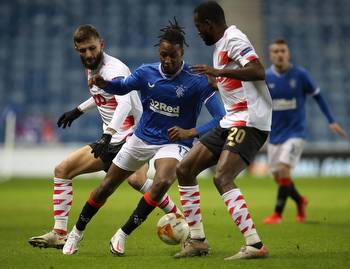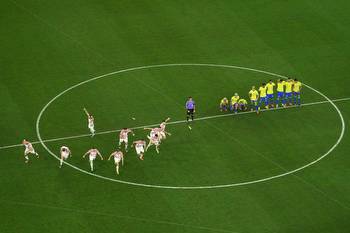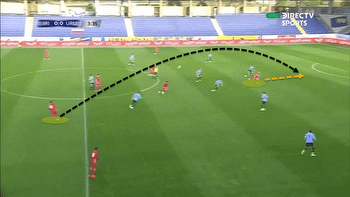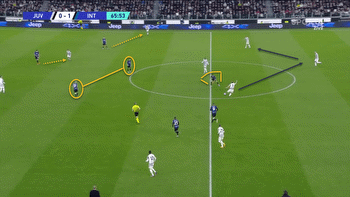Ivan Leko at Standard Liège 2023/24
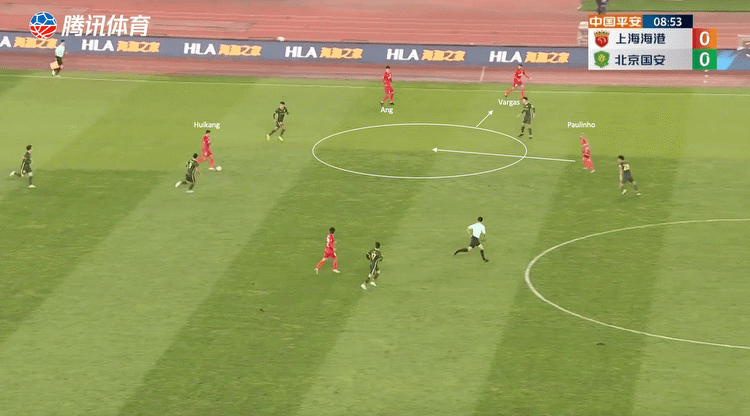
After an underwhelming first half of the Belgian Pro League season, and with the club languishing in 9th position and only two points above the relegation zone, Standard Liège made the decision to sack Carl Hoefkens. His replacement is someone who has both played and managed in Belgium before, with the Belgian side appointing 45-year-old Croatian Ivan Leko.
His previous managerial stops in Belgium were at Club Brugge & Antwerp, with Leko winning the league and cup double with the former and the Belgian Cup with the latter. He now returns to Belgium football for a third time as a manager after more recent managerial stops in China and his native Croatia. This tactical analysis will take a detailed look at what Standard fans can expect from their side tactically under their new head coach, with an emphasis on the attacking side of things, as this has been an area where Standard Liège really struggled in the first half of the season under Carl Hoefkens.
What formations could Leko use at Standard Liège?
In his previous managerial stops, Ivan Leko has demonstrated his tactical flexibility, with it common for the Croatian coach to alternate between setting his side up in a back three or back four system. For example, during his spell in charge of Shanghai Port, Leko tended to set his side up in a back three, usually a 3-5-1-1. At Hajduk Split, the Croatian started his tenure by using what usually would look like a 3-5-1-1 but switched to a 4-2-3-1 as he began to stamp his style of play more on the side.
Through the first half of the Belgian Pro League season, Hoefkens had somewhat of a similar philosophy when it came to how he set up the side formationally. Most of the time, the Belgian coach opted to use a 3-5-2, while a 4-4-2 was also a formation that was used at times. In regards to an early prediction as to what Leko may use, a 3-5-1-1 would be the most realistic option, though a back four is very much a possibility as well for Leko. As this analysis piece progresses, we will now look a little closer at a few of the fundamental tendencies and tactics to expect from Standard Liège under Ivan Leko.
Heavy emphasis on crossing and creating space out wide
From an attacking perspective, there are a few common trends and tendencies to expect from Ivan Leko teams. One of these is a heavy emphasis on wide play and crossing, whether his side is set up in a back three or back four. Leko also likes to build play through the central areas, with fluid attacking rotations helping to create space (which will be covered in more detail later in this analysis).
The data viz graphic above shows the progressive passes of Shanghai Port and Hajduk Split (Leko’s most recent clubs) during the Croation’s time in charge. As we can see from the graphic, they are actually pretty similar, with both sides utilising the full width of the pitch and looking to send dangerous crosses into the box often from these areas. However, they also both looked to have a presence in the central areas as well, but keeping the width and having an emphasis on wide play is also vital for Leko.
At both of his previous stops, his sides ranked either first or second in the division in total crosses, helping to illustrate how often Leko’s sides will look to play dangerous balls into the opposition’s penalty box from the wide areas. However, it is not just the quantity but also the quality of crosses that Ivan Leko’s sides have played into these dangerous areas. At Shanghai Port, their crossing accuracy ranked third in the Chinese top flight. At the same time, at Hajduk Split, they sat 6th in crossing accuracy, showcasing the quality Leko looks for his wide players, particularly in these crossing zones in the final third.
These next couple of images show how Leko wants his side to attack from the vast areas and how to create the space for the ball to find these zones and then be crossed into the box. As the image above shows, the ball is currently in possession of Lukas Grgić, who played as the deepest of the midfield five for Hajduk Split in this match. On the weak side, the right-sided wing-back, Dino Mikanović, has held the width instead of narrowing off, with the right-sided central midfielder, Anthony Kalik, occupying this space instead, giving Mikanović the freedom to hold the width. This also then creates an overload against the opposition defender, something that Grgić spots and looks to exploit with a ball over the top and into the zone that the wing-back is drifting into.
The figure above shows the second phase of this attack from Hajduk, illustrating the movements of the runners into the box and the space Mikanović has on this far side. Mikanović is offered all this space due to his initial positioning, with the opposition fullback occupied by the more dangerous player who was narrowed off in the previous image. This allows the wing-back time and space to pick his spot for a cross, with the Hajduk runners making great layered runs and also having a numerical advantage inside the 18-yard box.
This cross just misses its spot, with it aimed for the near post runner but intercepted by the opposition centre-back when it is played. However, this example is able to highlight how Leko looks for his sides to create attacking advantages in these crossing moments, as well as how they look to create space out wide.
The figure above shows a similar situation to the one that was shown just before. The ball is in possession of Hajduk in a more central area, with the majority of the opposition in this tight zone looking to block the central spaces. The opposition full-back is caught watching the player who has tucked inside, again allowing the wing-back on the weak side space to drive into from a wider position.
As his passing window gets tighter, midfielder Yassine Benrahou switches the play out to the weak side wing back, Dario Melnjak. The 31-year-old finds himself in plenty of space to control possession, allowing another overload opportunity to be created, as shown below.
As the second phase of this attacking move shows, the ability of Leko’s side to crowd the central areas with players allows an overload to be created against the opposition fullback once the ball was switched to the weak side wing back. Striker Marko Livaja is also able to make a run from a deeper lying position into the penalty box unmarked, creating an overload against the defender. Unfortunately, the pass back inside by Melnjak is not good enough, with the defender able to get a toe on it and send it out for a corner kick.
As this section has been able to illustrate, this is one attacking tactic that will commonly be seen in sides managed by Ivan Leko. It likely will be something he implements early on at Standard Liège, with the club in a poor place this season from a chance creation and goalscoring perspective.
Use of movements and positional rotations to create space for verticality centrally
As this analysis piece is looking at how Ivan Leko may be able to improve Standard Liège from an attacking perspective this season, another thing we have to look at is how he likes his central players and forwards to create space in the central areas, especially in Leko’s 3-5-1-1 formation. While utilising width and trying to create overloads and space in these zones is something Leko wants to do, he also wants to develop advantages in all areas of the pitch when his sides are attacking. At both of his recent managerial stops, Leko’s sides either led the league or were near the top in through passes, showing the emphasis he also places on verticality and looking to play forward and break lines centrally, as well as link play from his forward players.
In the central areas, Leko will look for his sides to overload the opposition in these zones, especially in a 3-5-1-1, but also in a 4-2-3-1. There are also plenty of off-the-ball movements and rotations, as well as the strikers dropping into deep pockets in the midfield or even drifting out wide, something that happened relatively often with Croatian international striker Marko Livaja when Leko was head coach at Hajduk Split. To summarise, Leko wants to confuse opposition defences in the central areas, with his players looking to move into pockets of space and other favourable positions in the same vicinity, essentially looking to play multiple passes ahead.
The image above shows an attacking phase of play for Shanghai Port when Ivan Leko was in charge, illustrating this tendency to use movements and positional rotations to create space in central areas. In this phase of play above, the ball is in possession of the Shanghai defensive midfielder, Cai Huikang. For context, Shanghai were playing a 3-5-1-1 in this match against Beijing Guoan. The left-sided central midfielder, 26-year-old Argentinian Matías Vargas, flared out to the touchline, with the left-sided centre-back, Li Ang, also advancing into a higher position. The wing-back is already located in the attacking half for Shanghai, out of the picture.
This creates space for Paulinho, the Shanghai #10, to drop from a much more advanced position into this pocket of space to receive in a more defensive midfield position. Notably, Shanghai have also managed to create an overload in this zone against the Beijing defenders. After receiving from Huikang, Paulinho plays a first-time pass out wide to Ang, who ideally would have played a line-breaking pass down the line to Vargas but plays backwards instead. This example shows how Leko looks for his side to always be thinking multiple passes ahead, using these rotations and movements as well as quick ball circulation to catch opposition defences out.
The image above shows another example of these advanced attackers for Leko’s side and their rotations and how the Croatian coach wants them to drop into deeper pockets in the midfield to receive possession. In this phase of play above for Hajduk Split, this interchange of positions is between the central striker, Marko Livaja, and the centre-forward/#10, Jan Mlakar. The Croatian international striker spots the pocket in the midfield and drops into it, which lures the centre-back away with him as a result.
As Livaja drops to receive the ball as it is played, Mlakar makes a run beyond him into the space beyond the opposition defence that the central defender vacated by man marking and following Livaja. He is able to find Mlakar with the next pass, with the attacker able to run beyond the defence and to the edge of the penalty box before he is forced to recycle play.
The image above shows a similar example to the previous one, this time when Leko was in charge of Shanghai Port. In this phase of play above for the Chinese side, the ball is in possession of the wing-back on the far touchline. The interesting movement to spot is the one of the #10, Paulinho, who drifts wide to drag the Beijing midfielder out of position, opening a clear passing lane to the striker, Cherif Ndiaye, as a result.
The ensuing pass is played to Ndiaye, who drops into the space in midfield to receive with his back to goal, holding onto possession and allowing Shanghai to continue building up play in a more advanced area of the pitch. As this section has been able to illustrate, Ivan Leko will also likely look for his Standard Liège side to be more proactive and take more chances when it comes to progressing the ball from the central areas. While it will rely on plenty of off-the-ball movements and good work rates from the forwards and attacking midfielders, it could also help provide answers for Standard Liège from an attacking perspective.
Conclusion
As this tactical analysis piece has shown, Ivan Leko seems to fit very well from the surface level with Standard Liège. The Croatian has managed in the Belgian Pro League before and has had success at other stops in his managerial career. His main task will likely be to fix the poor attack that the Belgian side have this season, with the ultimate goal likely to qualify for the European playoffs in the second half of the season before fully kicking into gear before the 2024/25 campaign starts.
